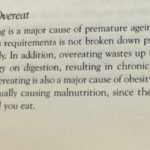
Videos on How Cars Work
The geek in me really enjoyed compiling these. Please do let me know if there are any more videos to add.
You may also like this – Audi Sport – A Legacy Story in Five Cylinders
How to Read a Tire Size & Understanding a Tire Sidewall – ABTL Auto Extras
Around The Corner (1937) How Differential Steering Works
It Floats – Chevrolet Full Floating Rear Axle (1936)
Auto Mechanics: Brakes: “Facts on Friction” 1934 General Motors
Back plate
The back plate serves as the base on which all the components are assembled. It attaches to the axle and forms a solid surface for the wheel cylinder, brake shoes and assorted hardware. Since all the braking operations exert pressure on the back plate, it needs to be very strong and wear-resistant. Levers for emergency or parking brakes, and automatic brake-shoe adjuster were also added in recent years.
Brake drum
The brake drum is generally made of a special type of cast iron which is heat-conductive and wear-resistant. It is positioned very close to the brake shoe without actually touching it, and rotates with the wheel and axle…
Amazon #ads
Wheel cylinder
One wheel cylinder is used for each wheel. Two pistons operate the shoes, one at each end of the wheel cylinder. When hydraulic pressure from the master cylinder acts upon the piston cup, the pistons are pushed toward the shoes, forcing them against the drum. When the brakes are not being applied, the piston is returned to its original position by the force of the brake shoe return springs…
Brake shoe
Brake shoes are typically made of two pieces of sheet steel welded together. The friction material is either rivetted to the lining table or attached with adhesive. The crescent-shaped piece is called the Web and contains holes and slots in different shapes for return springs, hold-down hardware, parking brake linkage and self-adjusting components. All the application force of the wheel cylinder is applied through the web to the lining table and brake lining. The edge of the lining table generally has three “V”-shaped notches or tabs on each side called nibs. The nibs rest against the support pads of the backing plate to which the shoes are installed…
Car Brakes: “Hydraulics” 1936 Chevrolet Auto Mechanics
Understanding Anti-lock Braking System (ABS) !
Always Press The Handbrake Button? Myth Busted
While we’re on Hydraulics
Hydraulic Steering – Principles Of Operation (1956)
Car Suspensions: “Spring Harmony” 1935 Chevrolet Auto Mechanics
Auto Mechanics: Suspensions: “Over the Waves” 1938 Chevrolet Division General Motors
Monroe Shock Absorbers Gay Commercial
Difference between Shocks and Struts
How automotive starting and charging systems work | ACDelco
Engine Oil Codes Explained, SAE (Society of Automotive Engineers) numbers – Oil Viscosity Explained
Discover How Car Batteries Work
ALTERNATORS & BATTERIES | How They Work
Motor Oil: “Riding the Film” 1937 Chevrolet Engine Lubrication 11min
Amazon #ads
Gear Shift “Vacuum Control” 1938 Chevrolet Division, General Motors
Auto Repair: Transmissions: “Planetary Gears, Principles of Operation, Multiple Sets 1953 US Army
How Does A Gas Pedal Work?
How gas pedal and fuel injection air flap works together Toyota Camry
Clutch, How does it work ?
Automatic Transmission, How it works ? Jan 9, 2016
Automatic Transmission, How it works ? Jul 30, 2016
Torque Converter, How does it work ?
Car Transmissions & Synchromesh: “Spinning Levers” 1936 Chevrolet Auto Mechanics 10min
Auto Mechanics: Transmissions: “Fluid Coupling Principles of Operation” 1954 US Army 13min
Auto Mechanics: Water Cooled Engines: “Water Boy” 1936 Chevrolet 11min
Down the Gasoline Trail (1935) How Fuel Goes Through An Engine
How Engines Work – (See Through Engine in Slow Motion) – Smarter Every Day 166
The Differences Between Piston and Rotary Engines
2 Stroke Engine vs 4 Stroke Engine
Engine Layouts – Explained (V6, I6, V8, W12)
Car Chassis: ” No Ghosts” 1935 Chevrolet Division General Motors; GM’s YK Automobile Frame
How does an Electric Car work ? | Tesla Model S





